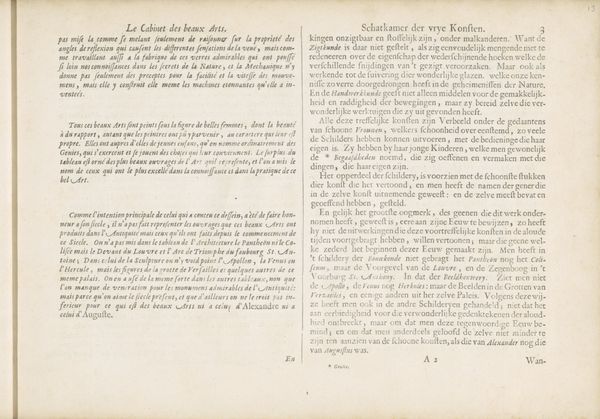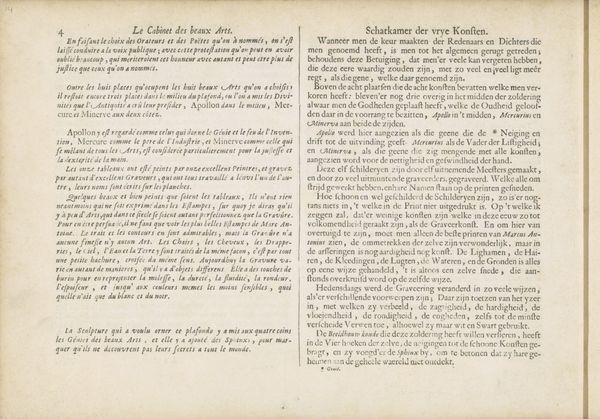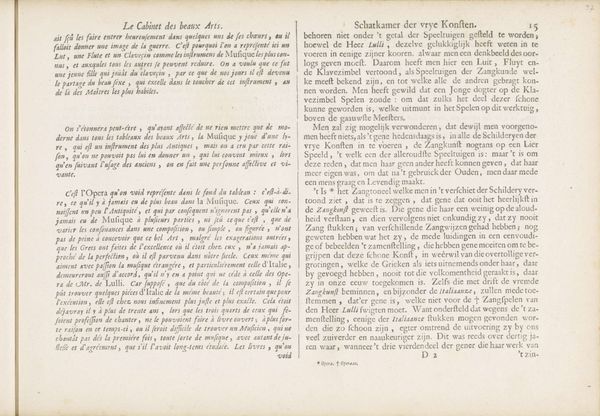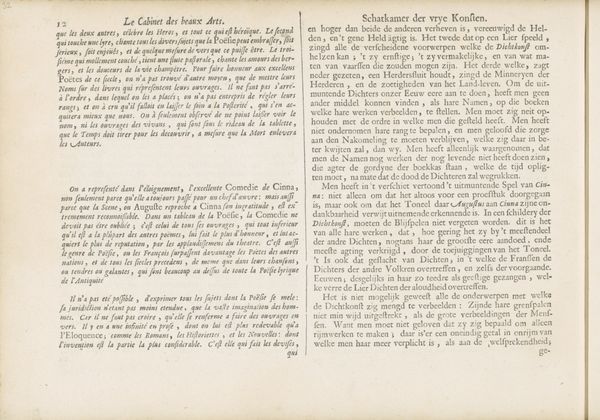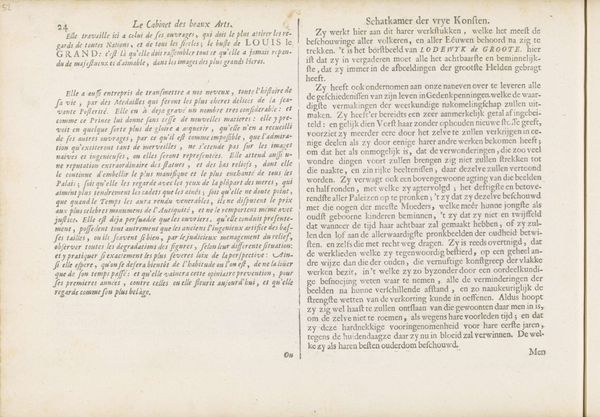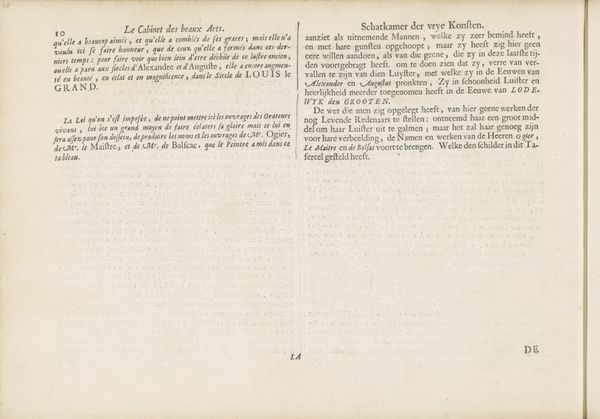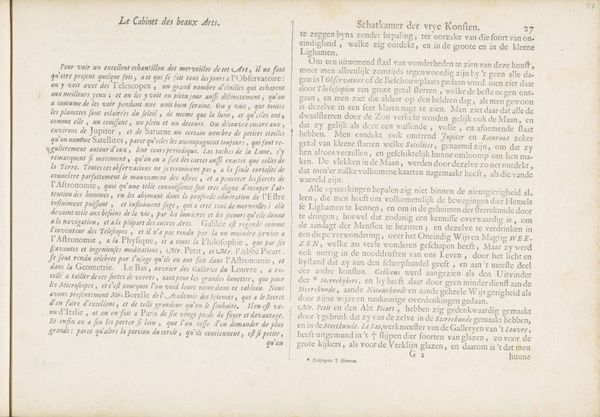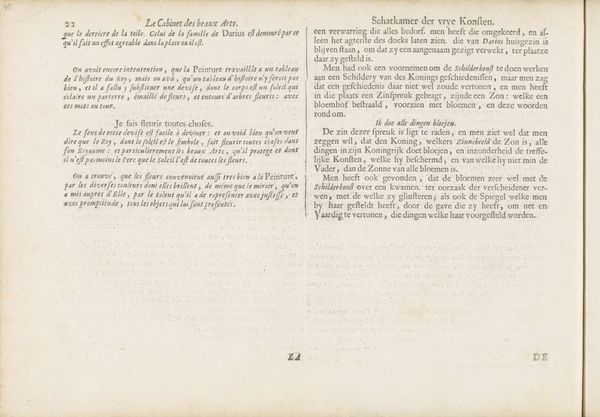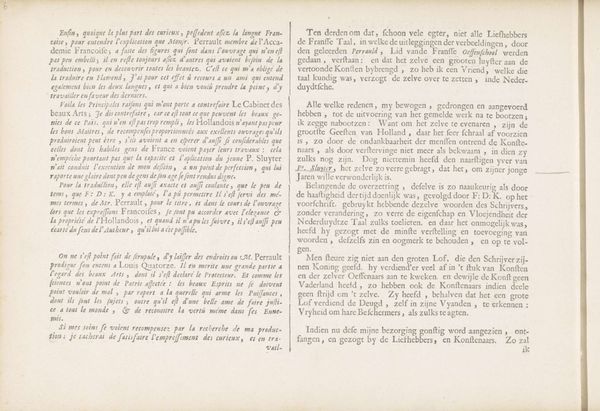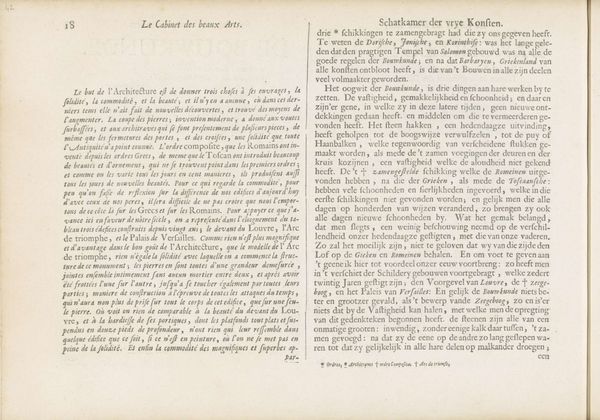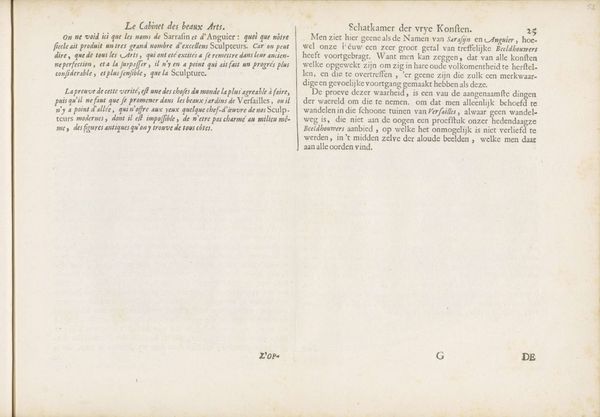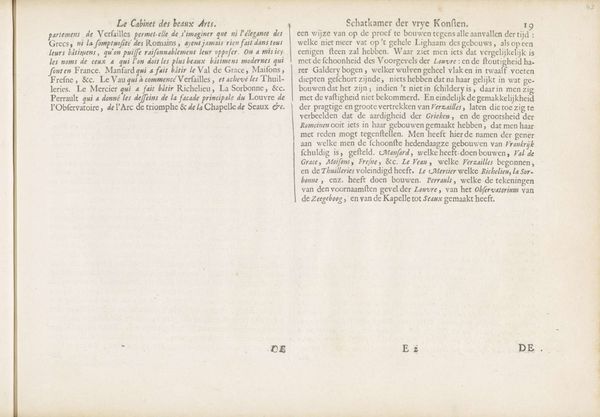
print, paper, typography
# print
#
paper
#
typography
Dimensions: height 219 mm, width 306 mm
Copyright: Rijks Museum: Open Domain
Curator: We're looking at "Verklaring van de prenten," a print from 1693 associated with Charles Perrault. It seems to be largely text-based, set on paper, and employing typography as its medium. My initial thought? Overwhelming. It looks like a wall of tightly packed prose in two languages! Editor: It definitely appears dense. But I am drawn to the physical act that birthed it. Think of the labour: the setting of the type, the careful pressing. You can sense the material constraints—how the printer had to economize on space, to pack everything in. Paper was valuable. Curator: Precisely, and in this period the presentation of knowledge was often entwined with power. The act of classification itself—of "explaining the prints," as the title suggests—is an assertion of authority. Who gets to define the boundaries of art, or knowledge, and on what terms? Editor: Absolutely. Notice also how typography flattens the distinctions between word and image. It reminds us that "art" wasn't cordoned off then the way our contemporary culture has defined it. Laborious, painstaking typography IS art! Curator: I find myself considering how these ideas circulate and shape the public’s understanding of art. Remember Perrault's influence. These textual analyses, produced alongside visual artworks, help frame reception and even prescribe certain values. Editor: It brings to mind the artisan's hand, laboriously replicating texts. I almost feel a tension there, the repetitive actions clashing against ideas within the writing. Are those thoughts promoting an artistry that printing devalues in practice? The actual craft challenges such 'lofty' values as individualism and ‘genius’! Curator: Yes! What a powerful contradiction that makes. It’s clear we can’t isolate the meaning from the means of production, the act of dissemination from the artistic statement itself. Editor: Examining the means—printing, paper, ink, effort—opens avenues that question preconceived definitions, even as words try to clarify "art." Both its time and ours define artistry by class, by the distribution of privilege that such processes inevitably encode. Curator: It’s a potent reminder that art, even when seemingly abstract or intellectual, exists within very real material and social circumstances. Editor: This brief glance, I think, confirms art’s inescapable roots in a society's productive energy, no matter if definitions, class-based or textual, seek transcendence of those limitations.
Comments
No comments
Be the first to comment and join the conversation on the ultimate creative platform.

